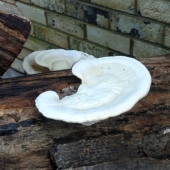




Maureen Atsali
Wrong Way Farm - Kenya




It's never too late to start! I retired to homestead on the slopes of Mauna Loa, an active volcano. I relate snippets of my endeavor on my blog : www.kaufarmer.blogspot.com




Maureen Atsali
Wrong Way Farm - Kenya










It's never too late to start! I retired to homestead on the slopes of Mauna Loa, an active volcano. I relate snippets of my endeavor on my blog : www.kaufarmer.blogspot.com








Maureen Atsali
Wrong Way Farm - Kenya



















In the south when the wind gets to 75 mph they give it a name and call it a hurricane. Here we call it a mite windy...
 2
2




He whai take kore noa anō te kupu mēnā mā nga mahi a te tangata ia e kōrero / His words are nothing if his works say otherwise
 1
1








If there is one thing the Wizard of Oz has taught me, it is not to trust school teachers on bicycles.
 1
1




Dylan Farai wrote:This really is fascinating. I just witnessed the same thing in my garden, an all white maize plant. My question is how do they make food since plants use chlorophyll to do that.

 2
2








Eino Kenttä wrote:I found an all-albino lingonberry plant in the forest close to our land. It was still alive one year after I first spotted it. I guess there are two possibilities: Either it's not a whole plant, but a mutated shoot from an otherwise normal plant, or else it's being kept alive by the mycorrhiza...






| I agree. Here's the link: http://stoves2.com |




